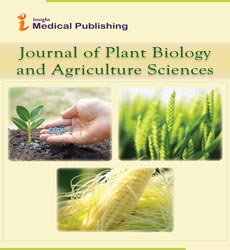Cover Crop Management Effects on Soil C and N pool and Fresh-Market Tomato Yield
Abstract
Depending on management, cover crops may improve soil and environmental quality and tomato yield. We evaluated the effects of hairy vetch residue management and the culture of hairy vetch (Vicia villosa R.) and rye (Secale cereale L.) on soil organic carbon (SOC), microbial biomass nitrogen (MBN), soil inorganic nitrogen, and tomato yield for two years in a plastic high tunnel in Sapporo, Japan. SOC in the surface 10 cm depth was 2.87% to 17.5% significantly greater in hairy vetch incorporation, hairy vetch mulch, and the culture of hairy vetch and rye treatments, than in a no cover crop treatment (bare fallow). Residual soil nitrate−N, subject to leaching losses after winter, was increased by cover crops, more so by hairy vetch incorporation and mulch than the bicultural. MBN and inorganic N (NO3-−N + NH4+−N) were greater in hairy vetch incorporation than either hairy vetch mulch or bicultural. Tomato's total yield was 11.1% to 43.8% significantly greater in hairy vetch incorporation and mulch than in the bare fallow. However, the effects of the bicultural on MBN, inorganic N, and tomato yield varied with the C/N ratio of residues, and the best results were obtained with a C/N ratio of 17.6 than with 23.7. Therefore, if adequate seeding hairy vetch to rye ratio (2: 1) is used, the bicultural is a better management practice to increase SOC at the surface soil layer and tomato yield with the least residual N.
Open Access Journals
- Aquaculture & Veterinary Science
- Chemistry & Chemical Sciences
- Clinical Sciences
- Engineering
- General Science
- Genetics & Molecular Biology
- Health Care & Nursing
- Immunology & Microbiology
- Materials Science
- Mathematics & Physics
- Medical Sciences
- Neurology & Psychiatry
- Oncology & Cancer Science
- Pharmaceutical Sciences
